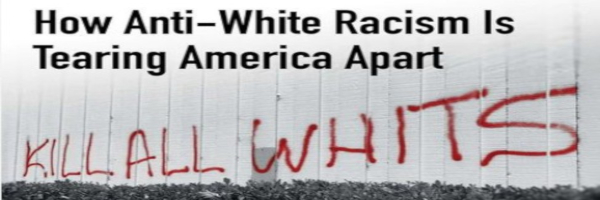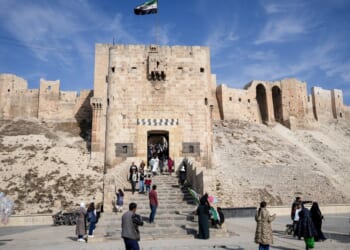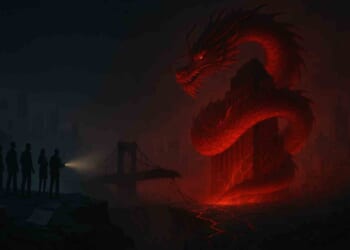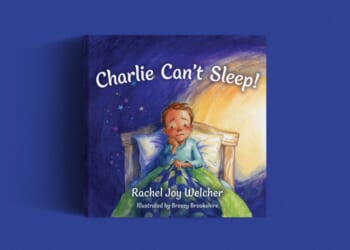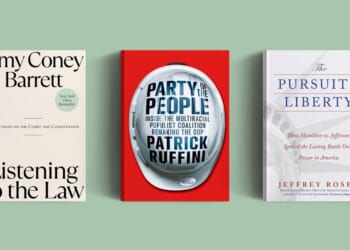By Donald Jeffries
The recent assassination of conservative influencer Charlie Kirk brought home the fact of how common such tragedies have been, both here in the United States and around the world. George Bernard Shaw accurately described assassination as “the most extreme form of censorship.” All too many political leaders have been “censored” in this barbaric manner.
Click the Link Below to Listen to the Audio of this Article
In 1865, Abraham Lincoln became the first American leader to be assassinated, although Andrew Jackson had survived an assassination attempt in 1835. Lincoln’s death was the result of an obvious conspiracy, which many researchers believe was a classic “inside job,” engineered by those in his own administration.
President James Garfield was then assassinated in 1881 by Charles J. Guiteau, a man most people agree was a mentally unstable lunatic.
When William McKinley became the third president in a row who’d been elected in a “zero” year to be assassinated, it gave birth to a legend about a supposed Indian curse. The “curse” continued with the deaths of presidents Warren Harding in 1923, Franklin Roosevelt in 1945, and the assassination of John F. Kennedy in 1963.
The JFK assassination in particular was so inadequately explained by those entrusted to investigate it that few Americans believe the ludicrous official lone-assassin narrative.
JFK’s younger brother Robert F. Kennedy was shot and killed, allegedly by a disgruntled Palestinian, Sirhan Sirhan, while running for president himself in 1968.
Again, there was an obvious conspiracy with a completely implausible official story. Even to this day, many researchers believe Sirhan was a victim of mind control.
Alabama Gov. George Wallace was shot and paralyzed during the 1972 presidential campaign. Arthur Bremer, the man who shot Wallace, said he did so because he felt assassinating President Richard Nixon would be “too difficult.”
In 1981, President Ronald Reagan was the next victim of an assassination attempt. Reagan was the oldest president ever elected to office, and the “curse” seemed certain to continue, but he survived and served two terms in office. His doctors said that Reagan survived the assassination attempt by pure luck. Had the bullet struck Reagan an inch or so away from where it entered, he would not have survived.
THE ERA OF ASSASSINATIONS
The 1920s featured a massive rise in anarchist violence, not only in the United States but around the world:
- In Russia, Emperor Alexander II was assassinated in 1881. A member of the revolutionary anarchist group Narodnaya Volya, Ignacy Hryniewiecki, was responsible for the act by throwing a bomb at the czar in St. Petersburg.
- In 1894, Italian anarchist Sante Geronimo Caserio stabbed French President Sadi Carnot to death in Lyon.
- In 1898, Italian anarchist Luigi Lucheni stabbed the Austrian empress in Geneva, Switzerland, using a sharpened needle file.
- King Umberto I of Italy was shot and killed in 1900 by Italian-American anarchist Gaetano Bresci in Monza, Italy.
- In 1908, both King Carlos I of Portugal and his heir, Crown Prince Luís Filipe, were assassinated in Lisbon by Manuel Buiça, an anarchist sympathizer, and Alfredo Costa, a Republican. (Back then, the Republicans in Spain were a wide-ranging coalition of groups that included communists and other leftists.)
- In 1912, Prime Minister José Canalejas of Spain was assassinated by anarchist Manuel Pardiñas in Madrid.
- In 1913, anarchist Alexandros Schinas shot King George I of Greece in Thessaloniki.
- Most notably, the 1914 assassination of Austria’s Archduke Franz Ferdinand and his wife in Sarajevo, Bosnia, precipitated World War I, which inevitably resulted in the death of more than 22 million human beings.
Back in the United States, anarchists were also causing mayhem. On Sept. 16, 1920, anarchists detonated a large bomb on Wall Street, killing 30 people on the scene. Another eight died of wounds they sustained in the massive “wagon-bomb” explosion.
In response, Attorney General A. Mitchell Palmer organized widespread raids in 1919 and 1920, which certainly trampled upon the rights of thousands of Americans who were subsequently targeted for their political beliefs.
- Just 15 years later, in 1935, Louisiana Gov. Huey P. Long was assassinated, only a month after announcing his candidacy for the 1936 presidential election.
In speeches on the floor of the U.S. Senate, then-Sen. Long basically accused the Roosevelt administration of plotting to assassinate him, which can still be read in the official minutes of Congress. Long was perhaps the greatest threat to the elite power structure this country has ever seen.
The full story of Long’s meteoric political career and predictable assassination can be found in this author’s book Survival of the Richest. Aspects of Huey Long’s populism were echoed in the 2016 campaigns of both Sen, Bernie Sanders (I-N.H.) and Donald Trump.
The 1960s and 1970s
In the 1960s, “urban guerillas,” sometimes associated with groups like the Black Panthers, advocated bombing American courthouses, restaurants, and other buildings, robbing banks and murdering police officers. It was basically the kind of agenda we see today in Antifa.
The Civil Rights movement under the leadership of Martin Luther King, Jr. stressed nonviolent protest, but other black leaders weren’t on board with this, and the black riots during the decade reflected this violent credo.
In the 1970s, the “counterculture”movement spawned violent groups like the Weather Underground, whose leaders weren’t above committing murder to achieve their objective to destroy the “establishment.” Between 1970 and 1975, Weather Underground terrorists committed 25 bombings in the United States.
The counterculture featured not only massive government infiltration, resulting in both Timothy Leary and Gloria Steinem being later exposed as CIA assets, but also an essential guidebook emerged, Saul Alinsky’s Rules for Radicals, which was dedicated to Lucifer himself.
The 1960s and 1970 also saw the rise in airplane hijackings, usually by Cuban radicals. The Palestine Liberation Organization morphed into al Qaeda, ISIS, ISIL, the Muslim Brotherhood, the Taliban, and Hamas, among other alleged terrorist organizations. These groups frequently claimed credit for numerous atrocities, and they served as a fortuitous presence for powerful Zionists devoted to supporting Israel’s seizure of the Holy Land and its treatment of the Palestinians. The murder of Israeli athletes at the 1972 Olympics only fueled the commitment of these Zionists.
With Trump’s election in 2016, the new left became increasingly strident, with angry lesbians wearing hats designed to look like the private parts of women, and Black Lives Matter constantly pushing the envelope and endorsing violence, with specific threats against Trump.
During the long hot summer of 2020, cities burned all across America. Statues of iconic American heroes were torn down and monuments defaced. Vulgar graffiti was seen everywhere. This was organized left-wing violence on a national scale.
Black Lives Matter was particularly active in this regard. At one point, The mostly peaceful Occupy Wall Street protests devolved into Antifa and Black Lives Matter orchestrations of mayhem.
In Seattle, whole blocks were taken over by a radical offshoot of Antifa, complete with an Uzi-armed leader dressed as an African warlord. City officials showed remarkable restraint, even when people died.
The leader was never prosecuted, as were very few other Antifa figures.
Trump took no real action against Antifa or Black Lives Matter, only half-heartedly threatening to send in the National Guard, which he never did. This made his recent deployment of the National Guard into Washington, D.C. and other crime-plagued cities all the more perplexing.
SANCTIONED POLITICAL VIOLENCE
Then there are all the assassinations and coups orchestrated by the Soviet Union and our own CIA over the decades. Saddam Hussein and Muammar Qaddafi are two recent notable victims of this effort.
In 1976, when the Church Senate Committee first revealed all the CIA and Mafia collaborations to end the life of Cuban leader Fidel Castro, public pressure was such that then-President Gerald Ford, a Warren Commission member, no less, signed an executive order banning assassination as a U.S. foreign policy weapon.
By the presidency of Barack Obama, the president and all his allies were bragging about assassinating their opponents. Obama joked that “I’m really good at killing.” Hillary Clinton laughed about the death of Qaddafi, declaring, “We came. We saw. He died.”
TODAY
President Trump has been the victim of two assassination plots, the first nearly costing him his life while speaking to a crowd in Butler, Pa., on July 13, 2024. On Sept. 15, 2024, Ryan Routh was caught with a rifle on Trump International Golf Club in West Palm Beach, Fla. He alleged he intended to shoot the president.
And, even more recently, in October, one of the Jan. 6 protesters pardoned by Trump threatened to kill Democratic House Minority Leader Hakeem Jeffries.
On Dec. 4, 2024, Luigi Mangione, a rich white kid, hunted down and executed an insurance executive. Interestingly, besides John Wilkes Booth, Mangione is one of the very few American assassins actually lionized.
And let us not forget Christian activist Charlie Kirk. His murder represented the first successful assassination of a prominent American political or religious leader since Robert F. Kennedy was gunned down in 1968.
Unfortunately, it seems assassination and political violence have always been with us. The question is whether it is worse today than it has been in the past. Looking at the long and sad history of political violence in America and abroad that we have only touched upon in this article, one would have to say “no.”
The difference today is that, while our politicians and the news media love to publicly condemn political violence (who doesn’t?), their rhetoric is at the core of the problem. When politicians and the news media continually defame their opponents by calling them fascists, Hitlerites, communists, threats to “democracy,” and terrorists—their words are taken literally by would-be killers who believe (as most assassins do) that their actions are patriotic and in the best interest of the public.
My suggestion is for both our politicians and media outlets to make a concerted effort to tone down their own violent, dangerous, and inflammatory rhetoric.







